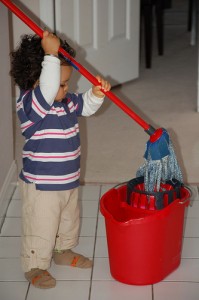
This little guy has the right idea. Lists (and floors) should be cleaned regularly. If not, the floor will get dirty and look bad. The list will get dirty too.
A dirty list doesn’t show the dirt the way a floor does, but it will affect the quality of your marketing and how much money you make.
List hygiene isn’t glamorous, but a clean list means more money, a better return on your investment, and the ability to better target your audience’s needs.
Size doesn’t matter as much as quality
Why is quality important?
A dirty list means more bounces. That can get you in trouble with your email provider. It can also mean that you get too many people unsubscribing from your list (which also makes you look bad). And those things can lead to being labeled a spammer.
A dirty list can also cost you money. Most email providers charge by your list size. A bigger list is great if it’s clean, updated, and responsive. It’s less than ideal if you’re spending money to reach old, outdated email addresses.
Update your list regularly
If this seems daunting, it’s easier to do it in small steps. My grandmother had the world’s cleanest house. Her secret? She did a little each day, rather than all at once.
Check the names on your file on a scheduled basis. Remind them why they signed up, what kind of information or emails they’ll get from you (particularly if you haven’t emailed them in a while. Give them the option to confirm they want to stay on your list or to unsubscribe. Offer a small gift or report in return for a response.
Remove people who are inactive
Check your list for names that are still valid, but inactive. If someone hasn’t opened your email in six months or more, send a friendly reminder. If they still ignore you, remove them from your list.
Get better engagement
A smaller, more active list is better than a large, indifferent one. You’ll get a much better idea of the topics your readers are interested in and can better target your messages.
